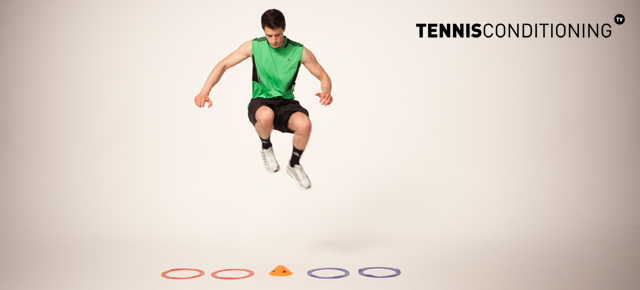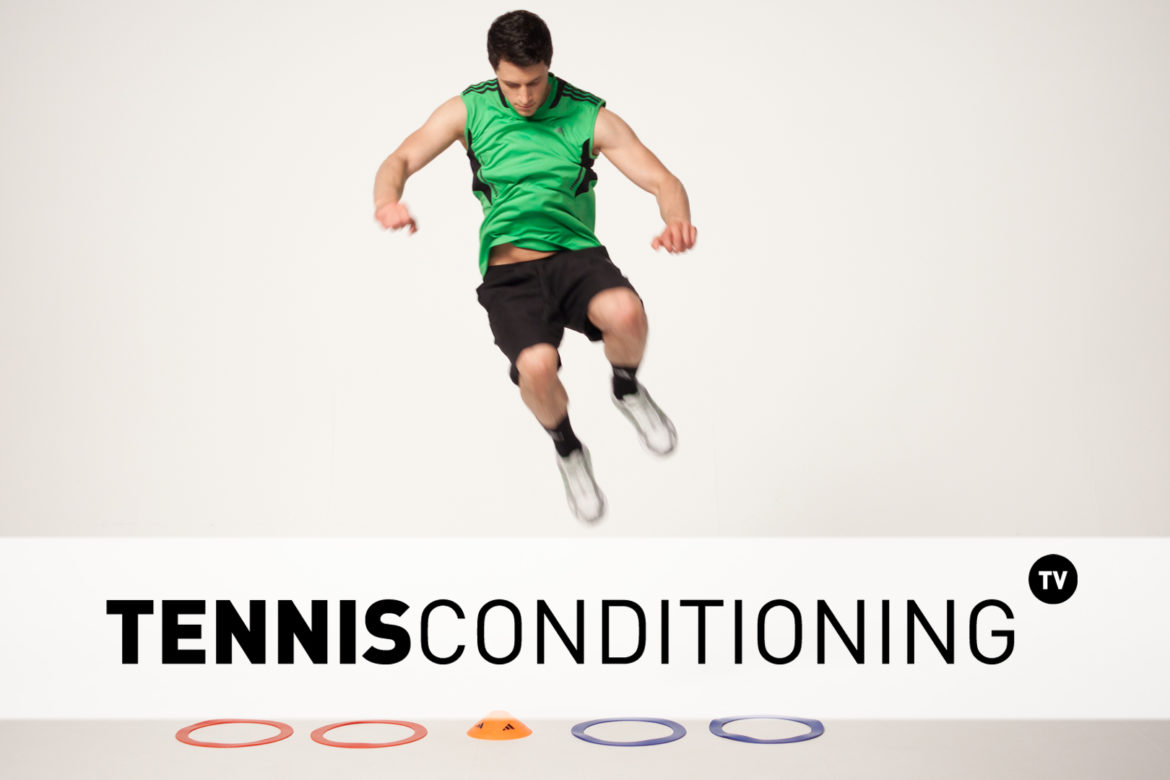The Lateral Tuck Jump is a plyometric exercise to develop neural pathways for explosive lateral quick start sequence along the baseline, foot speed, body control & coordination.
Before you start implementing plyometric exercises into your training program you may want to learn more about tennis plyometric training and how to develop neural pathways for maximum power for better results.
Lateral Tuck Jump Description

Athlete stands up straight and needs to:
- Place 2 agility rings on the ground two shoulder-widths apart and put a cone in between the 2 rings
- Place the outside foot inside the agility ring
- Position the feet under the shoulders
- Jump back and forth over the cone with both legs simultaneously while looking down at the feet; flex knees at hip level
- Outside foot lands inside the agility rings
Lateral Tuck Jump: How to Progress
If you use additional weights, such as ankle weights:
Make sure you use appropriate weight so you can control the action throughout the entire range of motion. Otherwise you may defeat the purpose of the exercise.
Very often, people use too much resistance and they become sloppy. Especially when it comes to maintaining dynamic stability and landing in the same spots.
Also, don’t just progress with adding more weight. Instead don’t look towards the ground while jumping but keep your head up and look forward. All while maintaining perfect form!
If that’s still too easy keep your head up and track and object while jumping.
Here are the progression levels:
- Beginner: look down
- Advanced: look forward
- Professional: look forward & track an object/person
Related Plyometric Exercises
- Low-Level Lateral Box Jump Rebounds
- Single-Leg Low-Level Tuck Jump
- Low-Level Abductor Box Jump Rebounds
Training Zone
We provide you with some more workouts and training tips you may be interested in to optimize your training.
Also, make sure that you warm up properly before and stretch out after your training session.




